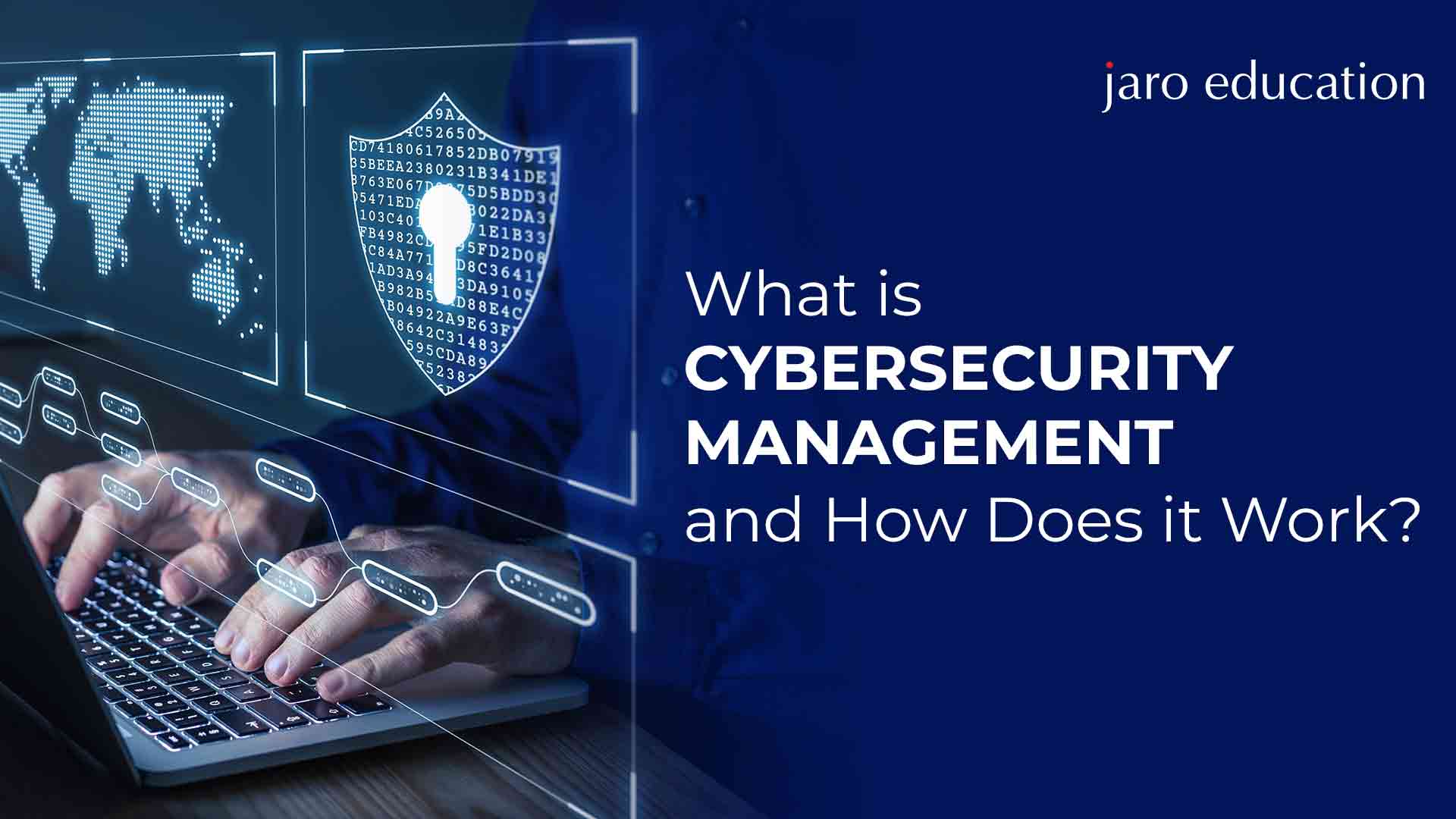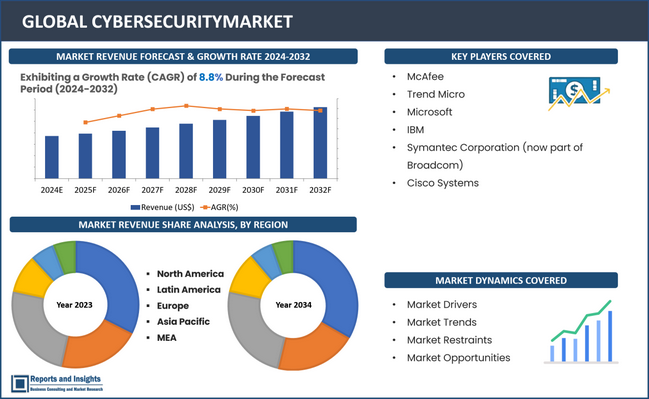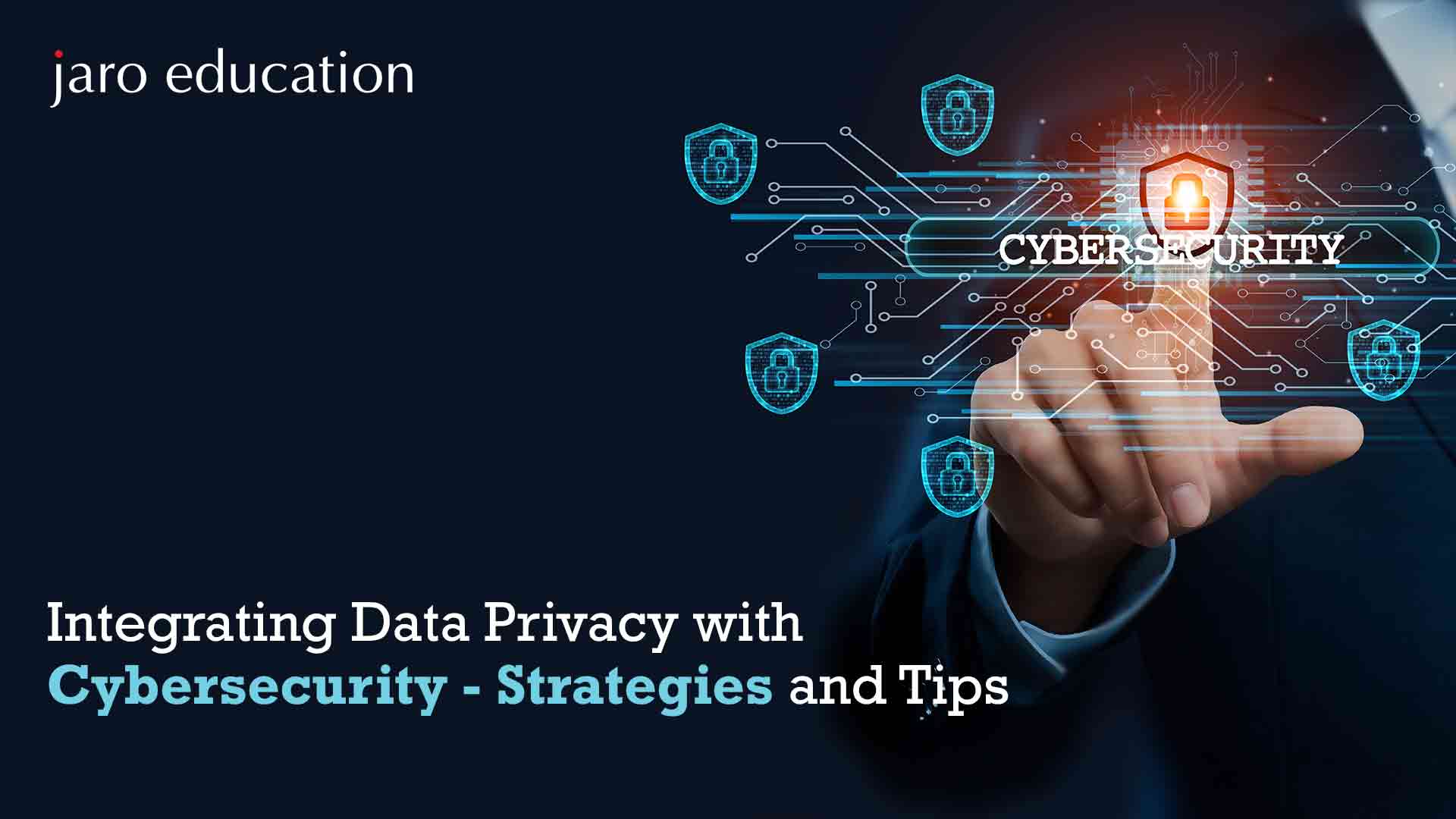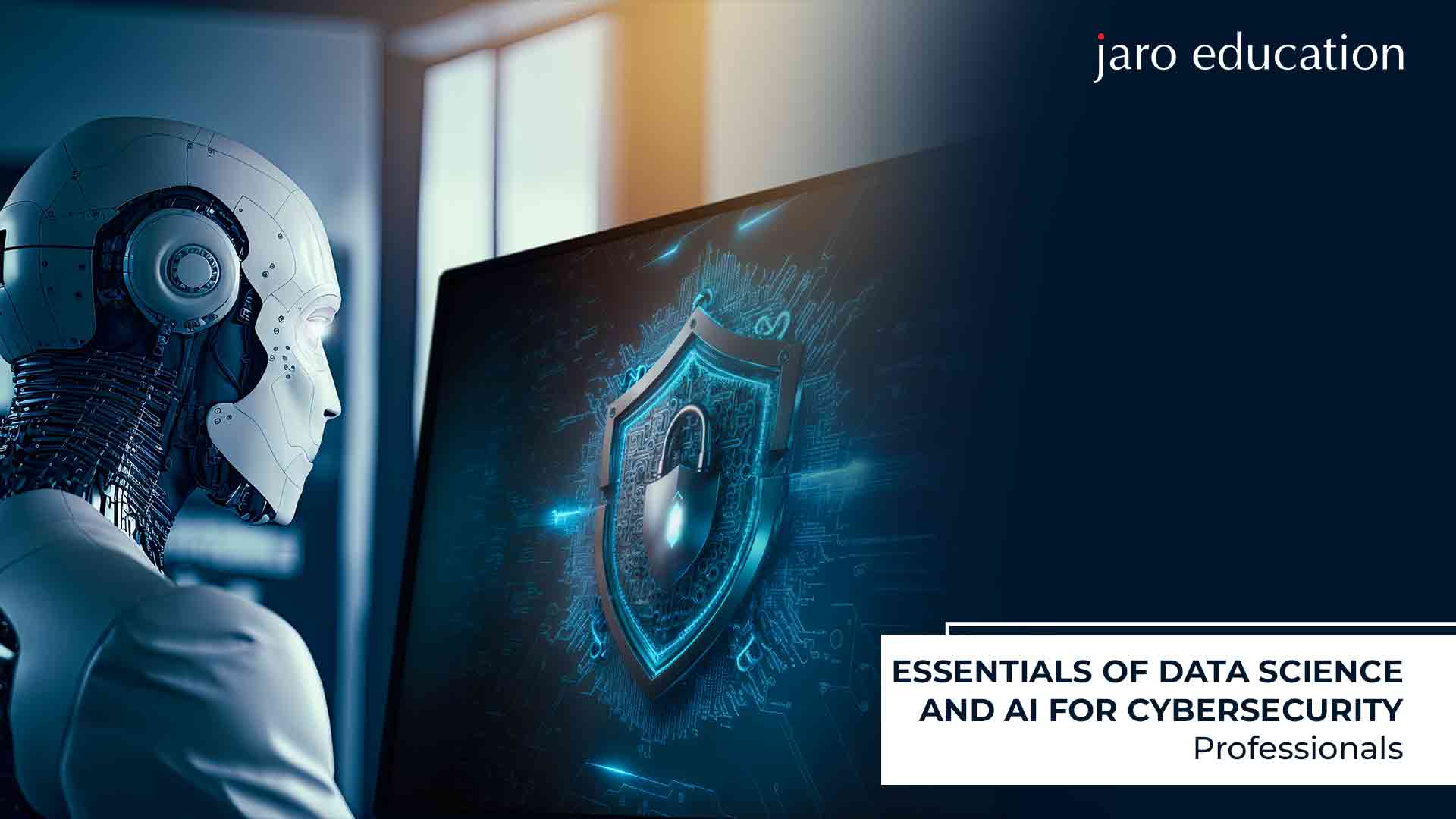What is Cybersecurity Management and How Does it Work?
Table of Contents

- jaro education
- 22, February 2024
- 2:00 pm
Cybersecurity management has become a top priority for organizations of all sizes. As companies embrace digital transformation, they find more of their critical systems and sensitive data exposed online. This expansive attack surface attracts cybercriminals, who relentlessly probe defenses using sophisticated tools and social engineering. No wonder business leaders rank cyber threats as their number one risk. To withstand this onslaught, companies must implement robust cybersecurity management programs. This involves continuously monitoring for vulnerabilities, controlling access, training employees, preparing incident response plans and aligning security with wider business goals. Effective cybersecurity management entails both technological solutions and a company-wide commitment to safety first.
What is Cybersecurity Management?
With digital transformation in full swing, organizations now operate complex IT ecosystems spanning both on-site and cloud-based systems. Employees can log in from multiple locations using company-issued or personal devices. While this flexibility provides business benefits, it also vastly expands the potential attack surface. Savvy cybercriminals continuously probe these ubiquitous connections for any weakness that grants access to sensitive data. A single breach can cripple operations, damage reputation, and incur stiff penalties. To defend against these threats, leading organizations implement cybersecurity management programs.
At its core, cybersecurity management involves developing and executing a strategy to protect the confidentiality, integrity and availability of data and systems. This begins with appointing a Chief Information Security Officer (CISO) or equivalent role to oversee and coordinate security. The CISO and their team take a holistic view, assessing risks across the entire IT infrastructure and developing policies to close vulnerabilities. Apart from that, cybersecurity management encompasses technological controls like firewalls and endpoint protection.
Perhaps most critically, effective cybersecurity management entails creating a culture where every employee takes ownership of safeguarding data. The CISO partners with department heads to integrate security into workflows in a minimally disruptive manner. Cyber risks and responsibilities are communicated clearly to personnel at all levels. With proper awareness training and support, staff play an active role in cyber defense rather than representing weaknesses to be exploited. In environments with robust cybersecurity management, individuals remain vigilant against threats and understand their duty to follow protocols.
Importance of Risk Management in Cybersecurity
For modern organizations, cybersecurity is an existential necessity rather than an option. As operations become digital, companies accumulate troves of sensitive data, including customer details, employee records, intellectual property and proprietary information. A single breach can expose this data, leading to catastrophic outcomes such as lawsuits, fines, extortion and reputational ruin. Not only must businesses safeguard information, but also ensure the continuity of IT systems that drive core functions. The risks are enterprise-wide, threatening finances, operations and strategic goals at every turn.
To mitigate these dangers, organizations must implement cyber risk management programs led by qualified professionals. Risk managers perform in-depth assessments to identify vulnerabilities in hardware, software, processes and personnel. Regular audits verify that defenses adhere to best practices and regulations. Proactive cyber risk management allows incidents to be contained quickly while training and plans equip staff to respond appropriately during crises. With robust risk management, companies gain assurance that their digital assets and infrastructure are protected.
Frameworks of Cybersecurity Management
While no singular overarching framework exists, organizations often model their cybersecurity management approach on established standards and guidelines. Three of the most widely adopted include:
Open Web Application Security Project (OWASP)
It focuses exclusively on application security. It offers tools, documentation and a frequently updated list of critical web application vulnerabilities. Adopting OWASP helps organizations secure websites, APIs, cloud services and other coded systems against exploits like cross-site scripting and injection attacks. Checking applications against OWASP resources is now common practice during design and testing.
National Institute of Standards and Technology (NIST) cybersecurity framework
It provides a flexible cybersecurity framework centered on identifying risks, implementing safeguards, detecting threats, responding to incidents and recovering normal operations. Built around practical steps rather than technological mandates, this framework helps organizations assess cybersecurity risks and align security activities with business requirements. NIST also publishes extensive cybersecurity guidelines which many regulators reference when setting standards.
International Organization for Standardization (ISO)
The ISO 27000 series outlines information security management systems standards published by the ISO. These are among the most widely recognized global benchmarks for managing cybersecurity. ISO 27001 in particular provides a model for establishing an effective information security management system. It emphasizes continually evaluating risks, instituting controls, training employees, enacting incident response plans, and obtaining management certification.
While cybersecurity frameworks differ, they share common principles of risk assessment, layered defense, policies to govern access and data, user awareness, and plans for incident response and disaster recovery. Selecting established frameworks lends credibility and structure when implementing cybersecurity management programs.
Importance of Aligning Cybersecurity with Business Goals
Effective cybersecurity management requires aligning security objectives with wider business goals. Rather than operating in isolation, security leaders must engage with stakeholders across the organization to embed protection into operations. Here are the ways in which cybersecurity helps business reach their goals:
- Security heads partner closely with other executives to conduct in-depth risk assessments. By fully understanding the company’s risk appetite and strategic direction, they can implement appropriate safeguarding measures.
- Security teams balance air-tight protection with the flexibility and accessibility needed for smooth business functions. They frame security in terms of reducing risks that threaten continuity, finances and reputation.
- By prioritising cybersecurity measures, businesses provide customers with the essential assurance that their data is safeguarded and create an environment where partners feel confident in sharing information. The strategic alignment and collaboration between security leaders and key stakeholders enable a demonstration of the robust cybersecurity infrastructure, fostering trust and confidence.
- Security executives highlight how effective programs save costs by preventing breaches that incur expenses for incident response, legal penalties, business disruption and reputation repair.
- Since security decisions affect the entire company, collaboration is key for successful implementation. All departments provide input on policies to reduce friction.
- Employees at all levels undertake security awareness training tailored to their role. With a collaborative approach, the organization jointly owns and participates in cybersecurity.
Best Practices in Cybersecurity Management
Organizations seeking to implement robust cybersecurity management should adhere to the following proven best practices.
- Companies must thoroughly understand their IT assets and environment, including all networks, data stores, devices, systems and software. Comprehensively mapping the IT ecosystem reveals potential vulnerabilities cybersecurity management should address. IT environments also require continuous monitoring since new risks can emerge rapidly.
- Concrete cybersecurity risk management strategies must be developed through collaborative assessment of tolerable risk levels. Strategies should outline mitigation procedures, stakeholder responsibilities, incident response escalation protocols and training needs and also must be adaptive as technology and threats evolve.
- Risk management should become engrained in company culture. All personnel must recognize their role in protecting information and technology assets. With that, security teams should communicate policies and provide training tailored to each department’s risks. When rigorously followed, protocols like access management and authentication help mitigate common threats like phishing and social engineering.
- Risk assessments must occur continuously, not just during periodic audits. Dynamic assessments identify emerging vulnerabilities and enable the refinement of defenses before incidents occur. Prioritized actions that measurably reduce risk make assessments actionable.
- Organisations should implement layered security protocols spanning networks, endpoints, data, applications and users. Measures like multi-factor authentication, encryption, access controls and network monitoring provide overlapping protection. With that, protocols balance security with productivity.
- Establishing comprehensive visibility within IT environments stands out as a cybersecurity management best practice, facilitating the swift detection of potential incidents. This involves centralised monitoring, meticulous logging, and the application of data analytics to gain insights across both on-premises and cloud assets.
Thus, adhering to best practices enables organizations to implement cohesive cybersecurity management programmes. This fosters resilience against evolving threats targeting technology and information assets. Certifications like ISO 27001 provide frameworks to align security controls with business objectives.
Cybersecurity Risk Management Trends
Several emerging trends are shaping cybersecurity risk management, which includes

*www.linkedin.com
Tech's New Era: 5G Meets IoT Challenges
With the rise of 5G networks, the Internet of Things (IoT) enters a transformative era. However, this increased communication between devices also brings the risk of external threats, attacks, and software bugs. Even popular browsers like Google Chrome have vulnerabilities. Securing 5G requires thorough research to prevent network attacks. Manufacturers play a crucial role in building robust 5G hardware and software to safeguard against potential data breaches.
Increased Potential of AI
AI, coupled with machine learning, transforms cybersecurity, offering automated security and advanced threat detection. While it enhances protection, there’s a flip side: AI is used to create smart malware. AI-driven threat detection systems predict and alert administrators to potential data breaches, providing both benefits and challenges in the field of cybersecurity.
Amplified Automative Hacking
In the current world like many devices, automobiles also use smart software for features like cruise control and driver assistance, relying on Bluetooth and WiFi. This connectivity, while convenient, opens them to hacking threats. As automated and self-driving vehicles become more common, strict cybersecurity measures are crucial to prevent unauthorized access and potential risks like eavesdropping.
These trends require agile cybersecurity management aligned closely with business goals. Rather than a siloed function, cybersecurity becomes embedded across divisions.
Conclusion
As digital transformation progresses, cybersecurity management has become an imperative for enterprises. Implementing robust strategies centered on risk assessment, access controls, training and aligning security with business objectives allows companies to derive maximum value from technology while safeguarding critical assets. Frameworks like ISO 27001 and NIST provide cybersecurity best practices. Ultimately, effective cybersecurity management hinges on collective vigilance, proactive threat hunting, and adaptable controls to match evolving threats.
Want to learn more about cybersecurity? Future-proof your career in cybersecurity management with IIM Nagpur’s cutting-edge PG Certificate Programme in Cyber Security Management and Data Science. Master cybersecurity essentials like risk management, governance, technical controls, and incident response. Harness data science tools for security analytics. Led by renowned IIM faculty and industry experts, this rigorous 6-month online program balances theory and practical applications. Gain in-demand skills to combat cyber threats and emergent technologies like AI, IoT, and Cyber Security. Apply now for cybersecurity certification and gain expertise in this domain.









